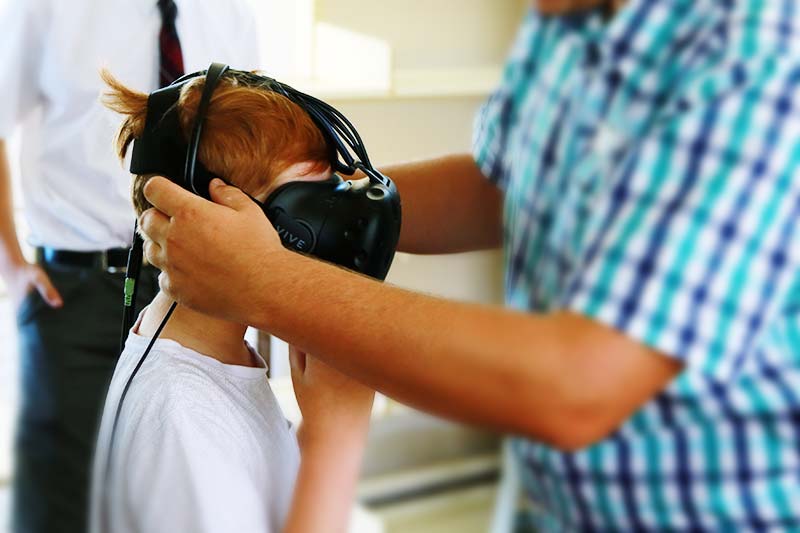
Technology in the Classroom
Technology is everywhere. Almost everything that we do in daily life – paying bills, making bookings, ordering things – uses technology or the internet in some way or other. The online life is here to stay, and it’s here to stay in education as well.
At NAC, we embrace technology in learning, not just because this is the world we live in, but because we can see the benefits it opens up in new areas of discovery, learning and communication.
What’s the future?
The skills our children need for their 21st century future are different from the skills that were needed even ten or twenty years ago. When we were at school, knowledge was king. The teacher was the fount of knowledge, and students worked to gain information.
Now, of course, knowledge and information can be found on the internet at the click of a button.
What students do with that knowledge, however, is something different entirely. The things they need to thrive in our information-rich world are collaboration and teamwork, creativity and curiosity, and of course, critical thinking and problem solving. We’re training children for jobs that don’t even exist yet, but we know they’ll need these skills moving forward.
Technology in learning
Inviting technology into the classroom is more than just getting kids to open a laptop and start typing an essay. Dr Ruben Puentedura, a leading educator, argues for what he calls the ‘SAMR’ model when it comes to technology in learning.
The simple ‘Substitution’ phase is where the technology acts as a direct tool substitute, with no functional change. For example, typing rather than writing by hand, or having maths questions on a screen rather than in a book.
‘Augmentation’ is where the tech is a direct substitute but adds a level of functional improvement. For example, an online maths quiz could offer immediate feedback to a student, letting them know if their answer is correct or not.
‘Modification’ is where bigger changes begin to happen. Learning tasks can be significantly re-designed directly because of the technology that’s available. Students might be able to watch a lecture or workshop online, and then use a computer-based mind mapping tool to capture their responses.
For me, the truly exciting part of having technology in the classroom shows up in Puentedura’s ‘Redefinition’ phase. This is where tasks can be completely recreated and re-imagined because of what is available. The ease with which video and film can be shot and edited now, for example, opens up some amazing possibilities for students, who might be able to turn in a video response to a lesson.
Recently some of my Year 12 D&T students had great success using this format, also giving them real-world skills as they move out of school into the design industry.
Our biggest challenge
The biggest obstacle students face when they come across technology in the classroom is distraction. We all know that it’s easy to get distracted by the internet. (After all, who doesn’t love a good cat video?)
A key aspect of the Building Learning Power program that we use at NAC is learning how to manage distractions. We work with students to be mindful about their learning, and problem-solve when they come up against things that hinder them.
Distraction is a very real problem out there in the real world too – by helping our students in school to manage it, we’re giving them true learning power going forward.
Appropriate use of technology
Finally, a word about digital citizenship. Technology, like any powerful tool, can be used constructively and destructively. Right at the beginning of school life, we begin teaching our very young students about negotiating the digital landscape: staying safe, and keeping others safe as well.
In Years 5 and 6, students are able to earn their ‘digital licence’, based on a cyber-safety framework from eSmart Schools that comes out of the Alannah and Madeline Foundation.
Year 7 students go through an entire technology ‘boot camp’ and a Digital Citizenship unit, and we constantly work to ensure that students are using their technology appropriately and for the good of themselves and others.
I’m a technology teacher, so obviously I love having tech in the classroom. But it’s more than that for me. Using technology I can communicate instantly and more effectively with my students, and I find my classroom is opened up to what the world has to offer.
Written by Graeme Ewing